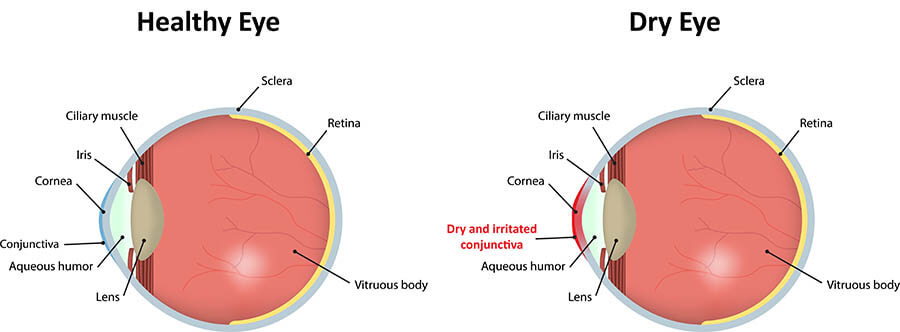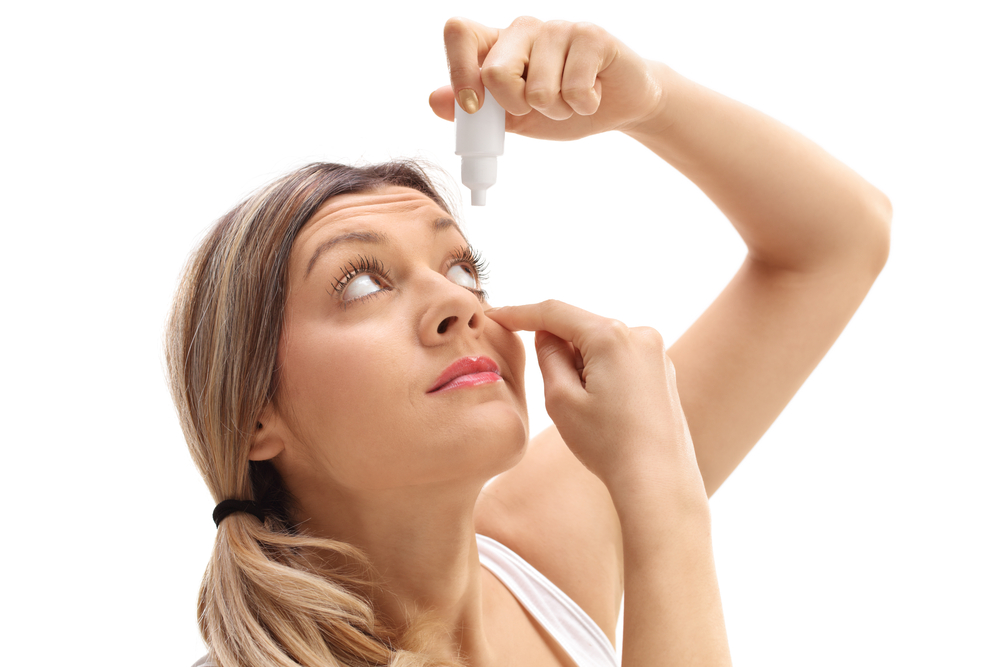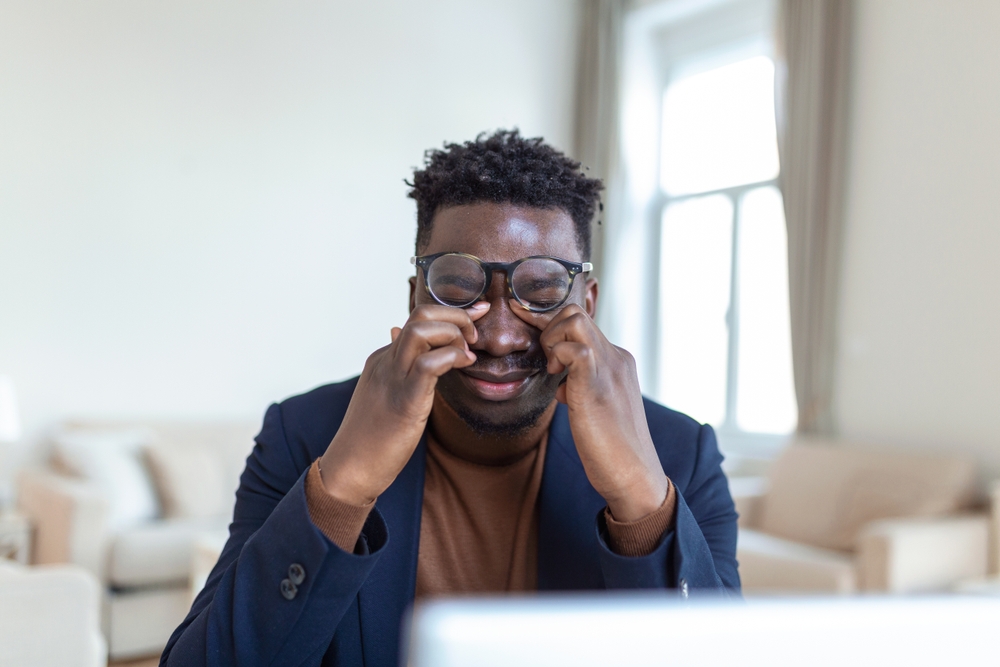Do your eyes ever sting, feel scratchy, or like they are burning? These may be signs of a chronic condition that millions suffer from called dry eye syndrome.
Dry eye syndrome is the most common of all the conditions affecting your eyes. Those with dry eyes may not notice the symptoms initially, but dry eye syndrome often worsens over time when left untreated.
Daily tasks like driving, cooking, and reading become uncomfortable and challenging to complete because your eyes feel itchy, watery, or drier than usual.
The good news is dry eye syndrome is treatable. Many patients find that treating their symptoms helps them find the relief they need, allowing them to return to the things they love. Keep reading to find out how to treat dry eye syndrome!
What Is Dry Eye Syndrome?

As the name implies, dry eye syndrome is a chronic condition that occurs when the eye lacks hydration. A healthy eye contains adequate moisture, allowing you to see comfortably and clearly.
Dryness can happen for several reasons. The primary reasons are you may not produce enough tears, or the tears produced are not high enough quality and lack nutrients necessary for healthy tears.
Your eye gets its moisture from the tear film. The tear film is a fluid layer that spreads across your eye every time you blink.
This layer is not only made up of water. It also contains fatty oils, proteins, and other nutrients your eye needs to function correctly.
Tears themselves contain two distinct layers aside from water: oil and mucous. Oil stops tears from evaporating too quickly.
Mucous allows tears to stick to the eye. These three layers are produced by different glands located around the eyes.
You cannot have healthy tears or eyes if the tear layer lacks the three necessary components. Tears protect your eyes from irritants, like dirt and dust, that can cause infection.
They also allow for smooth blinking and supply oxygen and needed nutrients to the cornea. In addition, they play an active role in creating precise images by helping to focus light correctly.
Anyone can be affected by dry eyes, regardless of their age. However, your risk of developing dry eye syndrome increases as you age.
Wearing contact lenses is known to increase your risk as well. Other factors that can raise your likelihood of developing dry eye syndrome include a poor diet, taking certain oral medications, and having certain health conditions.
What Are Some Common Symptoms of Dry Eye Syndrome?
Each person with dry eye syndrome will experience it differently, as symptoms can vary from patient to patient. Some of the most common symptoms that dry eye syndrome patients may experience include the following:
- A burning, gritty, or stinging sensation
- Blurry vision
- Redness
- Light sensitivity
- Poor night vision
- Excess watering of the eyes
Blurry vision can make it extremely difficult to complete basic activities, from driving to the store to completing chores around the house. Additional symptoms include itchy eyelids, fluctuating vision, and minor eye abrasions.
Some patients may find that they no longer feel comfortable wearing contact lenses unless it’s for a short time.
Dry eye symptoms can be mild at first. You may hardly notice them. However, they usually worsen over time.
When left untreated, having dry eyes due to dry eye syndrome can lead to serious conditions like infection and even permanent vision loss.
How Is Dry Eye Syndrome Treated?
There is no one-size-fits-all solution when treating patients with dry eye syndrome. At Dell Laser Consultants, you’ll receive individualized treatment based on your unique needs.
The first step is determining the root cause of your dry eye symptoms. From there, we can create a personalized treatment plan that considers your needs.
At Dell Laser Consultants, we’re proud to offer our patients the Dell Eye Institute for Dry Eye Research. We are the only comprehensive dry eye clinic in Central Texas and a national leader in the field.
IPL for Dry Eyes
IPL for dry eyes was pioneered in the US by Dr. Dell and Dr. Cunningham at Dell Laser Consultants in 2015. Before 2015, IPL was primarily only used as a cosmetic treatment.
Thanks to this research, Dell Laser Consultants has helped IPL become one of the most popular dry eye treatments available in the world. IPL uses heal and short wavelengths of light to treat dry eye and improve tissues surrounding the eyelids and meibomian glands to reduce vascular leakage and ablate anormal vessels.
Artificial Tears, Gels, and Ointments

Artificial tears, gels, and ointments are often the first line of treatment for dry eye syndrome. These treatments help restore moisture to your eyes.
Specifically, they help to replenish the watery and oily layers of tears. Improving the quality of tears allows many patients to find relief from their symptoms.
Prescription Eye Drops
Prescription eye drops are another effective option. When you have dry eye syndrome, your eyes can become inflamed. Prescription eye drops like RESTASIS®, Xiidra, Cequa, and serum tears decrease inflammation while increasing your body’s production of tears.
Punctal Plugs
Punctal plugs allow tears to stay in the eye for longer. Many patients no longer need artificial tears after getting punctal plugs.
Punctal plugs can be temporary or permanent, and you cannot see or feel them. Punctal plugs are placed into the puncta of the eye, helping tears stay on the surface of the eye for longer. Because of this, patients experience improvement in dry eye symptoms.
TearCare®
TearCare® is a state-of-the-art device that unblocks meibomian glands. It is an in-office procedure performed at Dell Laser Consultants. TearCare uses heat to gently melt blocked oil in the meibomian glands, improving symptoms.
BlephEx™
Another treatment that targets your eyelid glands is BlephEx™. Sometimes, a blockage in these glands causes dry eye syndrome.
The BlephEx™ treatment cleans along the eyelids, removing debris and blockages from the eyelid gland openings on the margin of the eyelids, which helps reduce dry eye symptoms.
Additional Dry Eye Treatments
Additional dry eye treatments offered at Dell Laser Consultants include heat therapy masks and eyelid hygiene wipes. Your treatment plan will depend on the severity of your symptoms and what’s causing your dry eyes.
Many patients can alleviate their symptoms by making some fundamental lifestyle changes. Maintaining a nutritious diet supports healthy eye hydration. High-dose omega-3 fatty acid supplements can help improve dry eye symptoms. Talk to your eye doctor to determine the best high-dose omega-3 supplement.

You may want to consider changing medications if a medication is causing dry eye. A member of our expert team can advise you about any changes that could improve your symptoms.
Like with many conditions, the sooner you treat your dry eye, the better the outcome, and the sooner you can start feeling better. Schedule an appointment at Dell Laser Consultants in Austin, TX, today to find a solution for your dry eye symptoms!
Isn’t it time to stop living with the debilitating symptoms of dry eye syndrome once and for all?





